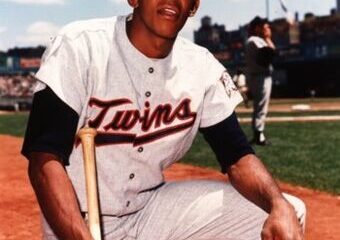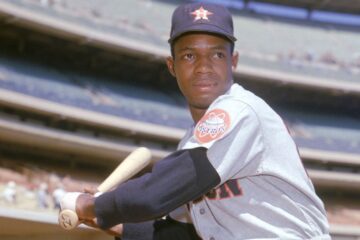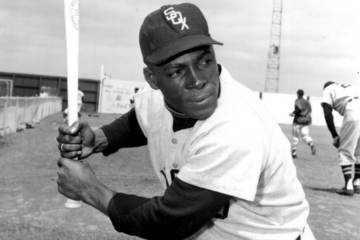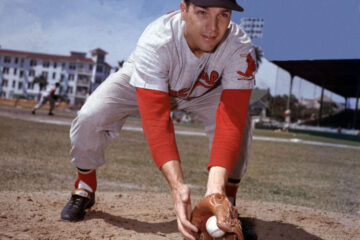The Hall of Fame Index: Who is the most qualified second baseman not in the Hall of Fame?
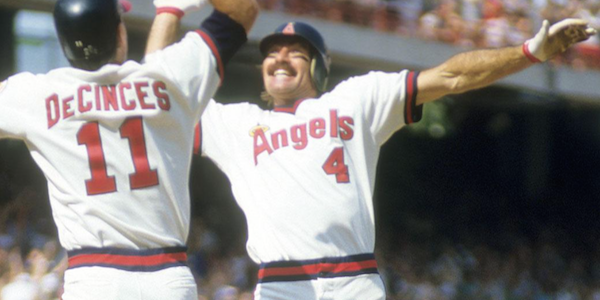
The common refrain from the traditionalist and average fan is that they know a Hall of Famer when they see one. They don’t need fancy numbers to tell them who deserves to be in. The funny thing is that these folks often then quote numbers to argue their point. I’ve spoken about this irony before, but it bears repeating again and again. Counting numbers have their place, but the end goal is helping teams win games. Which player is more responsible for his team winning?
I’ve also spoken about Bobby Grich and Lou Whitaker on this site before. So, seeing these numbers won’t be a shock if you are a frequent reader. Some of you will even notice that the numbers are slightly different than they’ve been in the past. That’s one of the primary challenges of writing a book like The Hall of Fame Index. Print is static while these numbers are constantly changing. That’s why I have never used any number as the dividing line between being in and being out. In some cases, that would alter what we say about a player.
The question instead is to determine which player is the most fit for Cooperstown. Instead of focusing just on the index, we will look at our usual tests to see if we can form a consensus. We might not be able to. Both players have their proponents and there are a couple more players that have their sponsors as well.
Career Value
| BWAR | FWAR | WS/5 | Total | |
| Lou Whitaker | 75.1 | 68.1 | 70.2 | 213.4 |
| Bobby Grich | 71.1 | 69.1 | 65.8 | 206.0 |
| Willie Randolph | 65.9 | 62.1 | 62.4 | 190.4 |
| Jeff Kent | 55.4 | 56.0 | 67.8 | 179.2 |
Value can be an elusive thing at times. Kent is the only one still on the ballot after getting a paltry 27.5 percent of the vote last year. He has three more seasons before he will automatically cycle off the ballot. He had six consecutive 100 RBI seasons and had eclipsed that mark in eight of nine seasons. That’s impressive for any player and particularly impressive for a second baseman. Yet, he is bringing up the rear here.
His omission (if we agree it is an omission) is the easiest to fix, but as we can see here might be the least warranted. The others will need to be added through the Veterans Committee and since they all played in roughly the same era there is little chance of more than one being added at the same time. So, who gets the nod?
Peak Value
| BWAR | FWAR | WS/5 | Total | Index | |
| Grich | 55.5 | 52.3 | 47.8 | 155.6 | 361.6 |
| Whitaker | 48.4 | 45.2 | 45.6 | 139.2 | 352.6 |
| Kent | 44.5 | 43.8 | 50.0 | 138.3 | 317.5 |
| Randolph | 43.1 | 41.1 | 40.2 | 124.4 | 314.8 |
For those that buy the book, they will hear this point driven into the ground. The index is about finding gaps in data. We want to see separation. We see separation between the top two and the bottom two. From there, the numbers are really close, so these numbers don’t tell us much beyond who the top two guys are. However, they do tell us some things when we take a closer look.
The main knock on Whitaker was that he never put up great numbers. He was always good as his career value shows, but he never dominated. Of course, we only have counting numbers to go on for the moment. Value is often hidden as we will see when we touch on Grich in more detail. However, it is fair to say that both Randolph and Whitaker suffered from a perceived lack of greatness.
Kent was missing something else entirely. Offensively, he was unrivaled as a second baseman. He retired with the record for most home runs hit as a second baseman (since bested by Robinson Cano). We noted his penchant for driving in runs earlier. What we will see is what happened when he put on the glove.
Offensive Numbers
| OPS+ | Rbaser | OW% | wOBA | |
| Grich | 125 | 4 | .609 | .361 |
| Kent | 123 | 1 | .604 | .367 |
| Whitaker | 117 | 32 | .594 | .353 |
| Randolph | 104 | 41 | .537 | .335 |
If you are seeing these numbers for the first time you are liable to be shocked. Many of you are thinking, “I didn’t know Grich was that good.” Join the club. When adjusted for the differences in era, he was better than Kent. Mind you, it’s not by a lot, but he clearly was a little better. Kent was winning MVPs and winning silver slugger awards. Grich never got those accolades, but he was better in reference to his time than Kent was in his.
Whitaker was close as well and was certainly the better base runner of the three. That helped his offensive winning percentage (OW%) approach the level of Grich and Kent. The simple fact is that Grich’s best skill was his ability to steal first base. That’s certainly not a skill that was recognized in the 1970s and 1980s and it’s barely recognized now. If we adjusted his wOBA for the era we’d discover it was far superior to any of the other three.
If we are looking for points of separation, this would be another area where we can put Randolph into another category. He was clearly an above average offensive player. His OPS+ and OW% are solid for second basemen, but they don’t compare well with the other three. Of course, we haven’t touched on fielding yet.
Fielding Numbers
| Rfield | DWAR | TZ2B | DWS/5 | |
| Randolph | 114 | 20.2 | 115 | 19.5 |
| Grich | 82 | 16.8 | 71 | 18.8 |
| Whitaker | 77 | 16.3 | 77 | 17.4 |
| Kent | -42 | -0.1 | -15 | 15.0 |
There’s the famous scene in Major Leaguewhere the manager is asking why no one else has caught on to the slugger they are looking at. At that moment he asks the batting practice pitcher to switch to breaking balls. Looking at Kent’s numbers here reveals a lot, but it doesn’t reveal everything, He started off at third base in the beginning and moved to first base late in his career. If you look at the total zone second base (TZ2B) you’ll see his defensive rating as a second baseman. Minus 15 runs isn’t good by any stretch, but when you consider he played second for a good ten years, the rating ends up being close to average.
Of course, like Randolph on offense, he is being compared to three pretty darn good fielders. Randolph never won a Gold Glove award. That seems remarkable when you look at these numbers, but it also highlights the problem of basing analysis on Gold Glove awards. He had seven seasons with 10 or more Rfield. That’s pretty strong. Frank White won eight Gold Gloves during the same period with 121 Rfield. He had only six seasons with 10 or more.
Pointing this out highlights two problems. First, the Gold Gloves were often not rewarded to the best fielder. Secondly, even if they were, there is still tremendous value in being the second best or third best fielding second baseman in the league. Randolph, Grich, and Whitaker all played in the same league at the same times as White. They all weren’t going to get the award, but all four were likely the best four fielding second basemen in the American League throughout the 1970s and 1980s.
Playoff Numbers
| PA | Slash | HR | Runs | RBI | |
| Kent | 189 | .276/.340/.500 | 9 | 25 | 23 |
| Randolph | 184 | .222/.304/.346 | 4 | 19 | 14 |
| Grich | 98 | .182/.247/.318 | 3 | 5 | 9 |
| Whitaker | 61 | .204/.350/.306 | 1 | 13 | 1 |
Playoff statistics present two separate issues. First, since they aren’t included in the index we are not sure how to weight them. The ultimate goal of team sports is to win and you want to know what guys did in the most important games. Still, how much weight do we give it when none of them had even 200 plate appearances in the postseason. That’s the equivalent of a little more than six weeks of regular season baseball. For Grich and Whitaker it amounts to three or four weeks.
The second issue goes beyond the numbers themselves. What do we think about when we think about a particular player? Randolph was on several championship teams even though his numbers were paltry. Kent never won a World Series even though his numbers were pretty good. So beyond the numbers, do we think of the player as a winning player? At the end of the day, that might be what is holding back Grich and Whitaker, but it begs the question: how much weight should we give postseason performance?
BWAR MVP Points
| Top 10 | Top 5 | MVP | Points | |
| Grich | 2 | 4 | 1 | 36 |
| Whitaker | 1 | 2 | 0 | 13 |
| Kent | 0 | 2 | 0 | 10 |
| Randolph | 2 | 0 | 0 | 6 |
The MVP points tell us the same thing as peak value in a different way. Grich was one of the ten best players in the league seven different times and the best player once. Whitaker only had that honor three times and was never the league’s best player. I hate to boil it down to something as simple as that, but when two players are as close as they are it becomes just that simple.
Grich gets dinged by traditionalists because he didn’t have 2000 hits and his career was perceived to be short. Whitaker gets dinged because he was always good, but never great. It comes down to which weakness you are more willing to live with. At some point it becomes a lot like complaining about Cindy Crawford’s mole. Both compare favorably to Ryne Sandberg, Roberto Alomar, and Craig Biggio. They have warts too. If forced to choose between the two I’d put in Grich first, but both deserve a slot.


